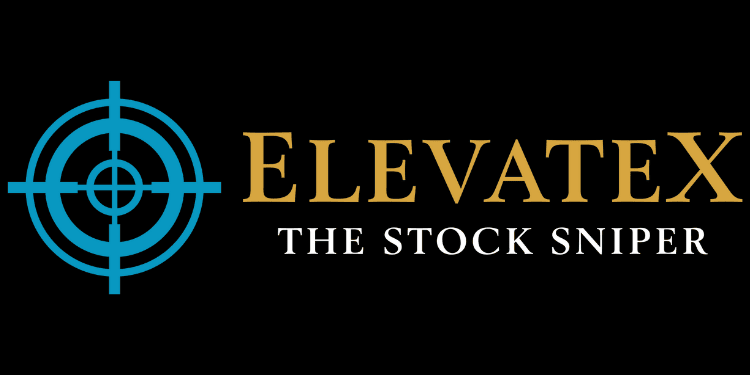- Live Life Grow Wealth
- Posts
- 📊Series 7 Day 5: Spotting Strong Balance Sheets vs. Weak Ones
📊Series 7 Day 5: Spotting Strong Balance Sheets vs. Weak Ones

Today’s Headline
📊 Series 7: Understanding Company Fundamentals
Day 5: Spotting Strong Balance Sheets vs. Weak Ones
When it comes to investing, one of the biggest lessons I’ve learned is this — a company’s strength isn’t always visible on the surface. Fancy advertisements, big names, or booming stock prices can fool anyone. But deep down, the real health of a company lies in its balance sheet.
Think of a balance sheet like a person’s health report. You can look great on the outside, but if your blood pressure, sugar level, and cholesterol are off, you’re not healthy. Similarly, a company may look successful from the outside, but a weak balance sheet tells a different story.
So today, I want to help you understand how to spot a strong balance sheet versus a weak one — the same way professionals and fund managers do.
“Imagine converting your customer calls into revenue-generating assets — discover how Synthflow’s AI-powered WhatsApp & voice agents are being used by fintech firms to scale without hiring more staff.”
Introducing WhatsApp Business Calls in Synthflow
65% of people still prefer voice, but 40% of business calls go unanswered. Now Synthflow Voice AI Agents can answer WhatsApp calls directly — resolving issues, booking, and following up 24/7 with full analytics.
📘 What Is a Balance Sheet?
Before diving into what makes it strong or weak, let’s quickly go over what a balance sheet actually is.
A balance sheet is one of the three main financial statements of a company. It gives a snapshot of a company’s financial position at a single point in time. It shows three main parts:
Assets — What the company owns (cash, inventory, buildings, etc.)
Liabilities — What the company owes (debts, loans, payables, etc.)
Equity — What’s left after subtracting liabilities from assets. This belongs to shareholders.
The formula is simple:
Assets = Liabilities + Equity
That equation must always balance — hence the name “balance sheet.”
💪 What Makes a Balance Sheet “Strong”?
A strong balance sheet is one that can weather storms — economic downturns, competition, rising costs, and unexpected events.
Here are the signs I always look for:
1. Low Debt Levels
Debt isn’t always bad. Some companies use it wisely to expand operations or acquire other businesses. But too much debt can be dangerous.
When a company has high debt compared to its earnings, it becomes vulnerable. If interest rates rise or revenue drops, debt payments can crush profits.
One simple ratio to check is Debt-to-Equity (D/E).
A low D/E ratio means the company isn’t relying too heavily on borrowed money.
A high D/E ratio signals risk — it means the company owes more than it owns.
For example, a company with a D/E ratio of 0.3 is much safer than one with 2.5.
2. Healthy Cash Reserves
Cash is the lifeblood of any company. Without it, even profitable businesses can collapse.
A strong balance sheet always shows a comfortable cash position — enough to cover short-term debts, pay employees, and invest when opportunities arise.
If a company has to borrow money just to pay bills, that’s a red flag. I prefer companies that can fund operations through internal cash flow rather than relying on external financing.
3. Positive Working Capital
Working capital measures a company’s ability to pay off its short-term obligations.
The formula is:
Working Capital = Current Assets – Current Liabilities
If this number is positive, it means the company can cover its short-term debts easily. Negative working capital, however, means trouble — the company might struggle to pay bills or suppliers on time.
A strong company always has a healthy buffer in its working capital.
4. Consistent or Growing Equity
Equity represents the shareholders’ stake in the company. Over time, a growing equity base signals that the company is building value for shareholders.
When I look at the balance sheet, I like to see retained earnings increasing — that means the company is reinvesting its profits rather than burning through them.
If equity is shrinking year after year, it’s usually a bad sign.
5. Strong Asset Quality
Not all assets are created equal.
For instance, having a billion dollars in inventory sounds great — but if that inventory isn’t selling, it’s useless. Similarly, owning buildings that don’t generate income isn’t as valuable as having cash or profitable investments.
A strong balance sheet has liquid, productive assets — things that can either be quickly converted to cash or that generate consistent income.
⚠️ What Makes a Balance Sheet “Weak”?
Now, let’s flip the coin.
A weak balance sheet is like a time bomb — it might look fine for now, but the moment something goes wrong, the cracks start to show.
Here’s what I look out for:
Unlock a New Revenue Stream with Strategic Outdoor Ads
Investors know the importance of reaching untapped markets—and that’s exactly where AdQuick shines. This platform simplifies the process of buying billboard and outdoor ad space, making it easy to launch targeted campaigns that generate brand awareness and ROI—without the traditional hassle.
If you want to explore an under-the-radar advertising channel that impacts both consumers and decision-makers, this could be your next portfolio diversifier.
Modernize your marketing with AdQuick
AdQuick unlocks the benefits of Out Of Home (OOH) advertising in a way no one else has. Approaching the problem with eyes to performance, created for marketers with the engineering excellence you’ve come to expect for the internet.
Marketers agree OOH is one of the best ways for building brand awareness, reaching new customers, and reinforcing your brand message. It’s just been difficult to scale. But with AdQuick, you can easily plan, deploy and measure campaigns just as easily as digital ads, making them a no-brainer to add to your team’s toolbox.
1. High Debt and Interest Payments
When debt becomes too large, the company’s flexibility disappears. Every month, a huge portion of earnings goes just to pay interest.
If profits drop or interest rates rise, the company could face serious financial stress. In the worst case, it might default or declare bankruptcy.
A good habit: always check how much of the company’s earnings go toward interest. The lower, the better.
2. Low or Negative Cash Balances
If a company constantly has to borrow money or issue shares to raise cash, that’s a red flag.
It tells me they’re not generating enough internal cash to sustain operations.
Companies with weak cash positions can’t survive long during tough times — they’ll either cut dividends, delay projects, or worse, lay off staff.
3. Negative Working Capital
Negative working capital means short-term debts exceed short-term assets.
This usually happens when companies grow too fast, mismanage inventory, or face declining sales. It’s like running a household where your monthly bills exceed your bank balance — you’ll eventually need to borrow or sell something to stay afloat.
4. Shrinking Equity
If equity keeps declining, it could mean the company is losing money year after year or paying out more dividends than it earns.
In the long run, this erodes the company’s foundation. It’s like watching your savings drain while your debts keep rising — not sustainable.
5. Overvalued or Unproductive Assets
Sometimes, companies carry “ghost assets” — items on the books that are no longer valuable, like outdated machinery or properties in poor locations.
These inflate the total asset number and give a false impression of strength.
When you spot this, be cautious. It often hides deeper problems.
🧭 How I Personally Assess a Company’s Balance Sheet
Let me walk you through how I usually approach a balance sheet analysis step-by-step:
Start with Cash — How much does the company have compared to its debts?
Look at Debt — What portion of the debt is due soon (short-term) versus later (long-term)?
Review Equity Trends — Is it growing or shrinking?
Check Working Capital — Is it positive and stable?
Examine Asset Quality — Are they generating income or just sitting idle?
If all five boxes are checked, I feel confident the company has a solid foundation.
💬 Real-World Example
Think about two types of companies during an economic downturn:
Company A has little debt, plenty of cash, and consistent profits.
Company B is drowning in loans and barely has cash to pay suppliers.
When the economy slows down, Company A can continue operations smoothly and even buy competitors at cheap prices. Company B, on the other hand, might face bankruptcy.
That’s why investors like Warren Buffett always emphasize financial strength before growth.
🧠 Key Takeaways
Let’s wrap this up with some simple takeaways:
A strong balance sheet = low debt + strong cash flow + growing equity.
A weak balance sheet = high debt + cash shortage + declining equity.
Always check working capital — it’s a quick measure of short-term financial health.
Focus on quality assets — cash and income-generating investments are better than illiquid ones.
Avoid companies that constantly need to borrow to survive.
Remember, even great stories or products can’t save a company with a weak foundation. Numbers never lie.
Final Takeaways
Before you invest in any company, always look beyond the headlines and stock charts. Spend a few minutes studying the balance sheet — it will tell you if the business is truly strong or just pretending to be.
Don’t chase hype or popularity. Strong fundamentals will protect your money in both good times and bad.
As you continue your investing journey, start building a habit of financial reading. The more you read balance sheets, the sharper your instincts will become.
And if you’ve found this lesson helpful, stay tuned — tomorrow we’ll dig even deeper into how to evaluate management efficiency and growth potential, two hidden gems most investors overlook.
Call to Action:
If you’re serious about becoming a smarter investor, start practicing what you’ve learned today. Pick one of your favorite companies, download its latest balance sheet, and go through the five key points above. You’ll be amazed at what you discover — and you’ll never look at a stock the same way again.
[Live Life Grow Wealth]
🎓 Free Masterclasses to Unlock Your Investment Potential
Take your money skills to the next level with expert-led workshops designed to help you grow smarter and faster.
Recommendations Section
“Peek into smart money moves — when big players act, you’re in the loop.”
|
Learn simple, proven ways to grow your money — straight from real investors who walk the talk.
|
“Hone your investing edge in just 5 minutes — smart, snappy insights to power your portfolio growth.”
|
“Stay ahead with one expert-picked stock monthly — clear, no jargon, built for growth.”
DISCLAIMER
I make no representations, warranties, or guarantees, whether expressed or implied, that the content provided is accurate, complete, or up-to-date. Past performance is not indicative nor a guarantee of future returns.
I am an individual content creator and not regulated or licensed by the Monetary Authority of Singapore (MAS) as I do not provide investment services.
All forms of investments carry risks, including the risk of losing your entire invested amount. Such activities may not be suitable for everyone. You are strongly encouraged to seek advice from a professional financial advisor if you have any doubts or concerns.








